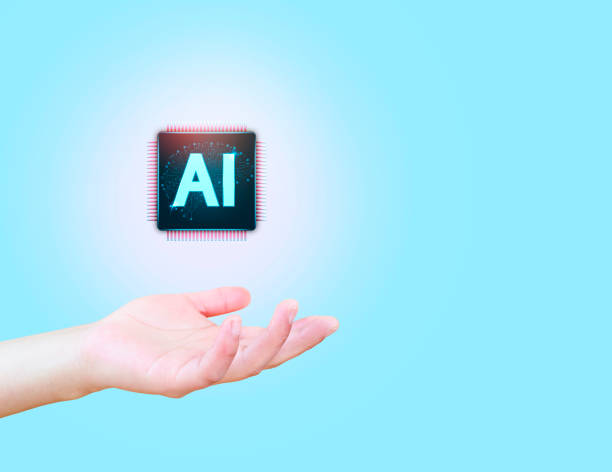### What is an Artificial Intelligence Robot and What are its Applications?
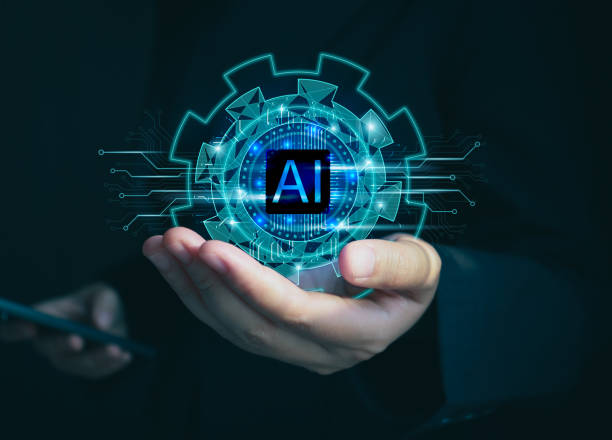
An artificial intelligence robot is a combination of two key concepts: #robotics and #artificial_intelligence.
In simple terms, an AI robot is a machine that, using artificial intelligence algorithms, is capable of performing tasks that typically require human intelligence.
These tasks can include learning, reasoning, problem-solving, natural language understanding, and pattern recognition.
The applications of AI robots are vast and diverse, and conceivable in almost every industry.
In the #manufacturing industry, smart robots can be used for automating production lines, quality control, and performing dangerous or repetitive tasks.
In the #healthcare sector, surgical robots, robotic nurses, and AI-based disease diagnosis systems help improve the accuracy and speed of diagnosis and treatment.
In the #customer_service field, chatbot robots and virtual assistants can answer customer questions, solve their problems, and provide a personalized experience.
AI robots have many applications in today’s life.
For example, they can be used in precision agriculture, traffic management, and even space exploration.
In short, an AI robot is a powerful tool that can help improve productivity, reduce costs, and solve complex problems in various fields.
With the ever-increasing advancement of technology, the role of AI robots is expected to become more prominent in our lives.
For more information about artificial intelligence, you can visit the Wikipedia page.
How much does losing business leads due to an unprofessional website cost you? Solve this problem forever with a professional company website design by Rasaweb!
✅ Increase the credibility and trust of potential customers
✅ Easier attraction of new business leads
⚡ Get a free consultation now!
Types of Artificial Intelligence Robots Based on Function
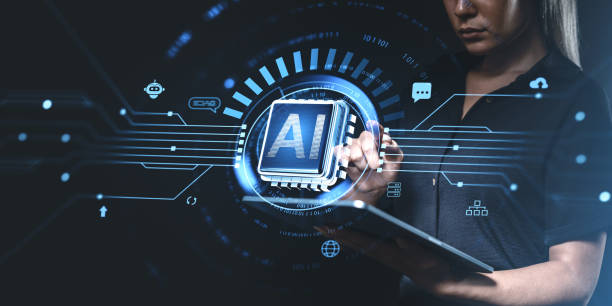
AI robots can be divided into different categories based on the type of function and tasks they perform.
One of the most common classifications is based on the type of movement and the environment in which they operate.
Industrial Robots: These robots are usually used in factories and production lines and are designed to perform repetitive, precise, and dangerous tasks.
Industrial AI robots often have powerful robotic arms and advanced sensors and can perform various tasks such as welding, painting, assembly, and packaging with high speed and accuracy.
Service Robots: These robots are designed to provide services to humans in various environments.
Service AI robots can include cleaning robots, delivery robots, nursing robots, and chatbot robots.
These robots usually have sound recognition, face recognition, and navigation capabilities and can move independently in complex environments and interact with humans.
Military Robots: These robots are designed for use in military operations and can perform tasks such as reconnaissance, bomb disposal, equipment transport, and even direct engagement with the enemy.
Military AI robots usually have advanced capabilities such as night vision, target detection, and remote control and can be used in dangerous and inaccessible conditions for humans.
Explorer Robots: These robots are designed to explore remote and unknown environments such as space, the deep sea, and contaminated areas.
Explorer AI robots usually have various sensors that can collect information such as temperature, pressure, humidity, and chemical compositions.
These robots can help scientists better understand these environments and discover new resources.
This diversity in function shows the extent to which AI robots can impact various aspects of human life.
Main Components of an Artificial Intelligence Robot
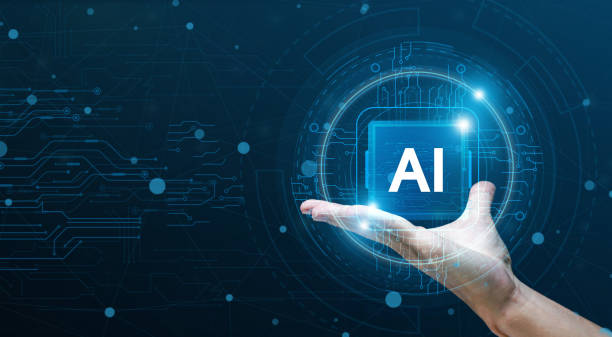
An AI robot consists of various components that work together to perform the desired tasks.
These components include:
Sensors: Sensors collect information about the surrounding environment.
This information can include image data, audio, temperature, pressure, and more.
Sensors play an important role in the AI robot’s understanding of the environment and allow it to react appropriately to environmental changes.
Processor: The processor processes the data collected by the sensors and makes the necessary decisions.
The processor usually consists of a computer or microcontroller that is programmed using artificial intelligence algorithms.
Actuators: Actuators allow the AI robot to interact with the surrounding environment.
These actuators can include motors, cylinders, and other mechanical devices that allow the robot to move, grasp objects, and perform other physical tasks.
Software: The software includes artificial intelligence algorithms and control programs that allow the AI robot to perform its tasks automatically.
AI robot software is usually written using programming languages such as Python, Java, and C++.
Power Source: The power source provides the energy needed to operate the AI robot.
The power source can include batteries, solar cells, or a connection to electricity.
The table below shows an example of robot components and their functions:
| Component | Function | Example |
|---|---|---|
| Sensor | Collects information from the environment | Camera, microphone, temperature sensor |
| Processor | Processes data and makes decisions | CPU, GPU |
| Actuator | Interacts with the environment | Motor, cylinder |
| Software | Controls the robot and executes algorithms | Operating system, artificial intelligence algorithms |
| Power Source | Provides energy | Battery, solar cell |
These components work together to form an intelligent system capable of performing complex tasks automatically.
In general, an AI robot is a complex and multifaceted system that requires expertise in various fields such as #robotic_engineering, #computer_science, and #artificial_intelligence.
Artificial Intelligence Algorithms Used in Robots
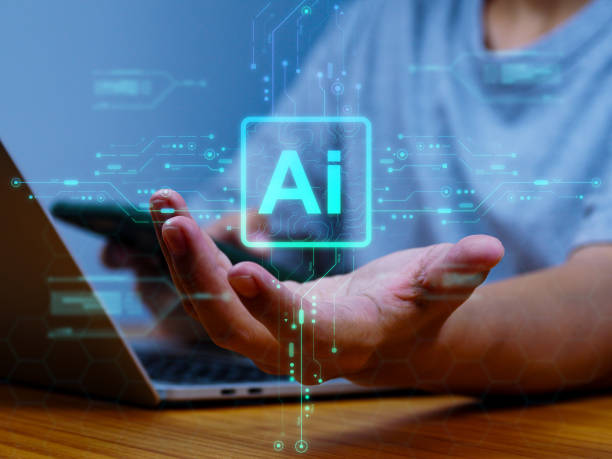
Artificial intelligence algorithms play a fundamental role in the operation of robots and enable them to perform various tasks automatically.
Some of the most common artificial intelligence algorithms used in robots include:
Machine Learning: Machine learning allows the AI robot to learn from data and improve its performance.
Machine learning algorithms can be used for tasks such as pattern recognition, prediction, and classification.
Reinforcement learning, deep learning, and supervised learning are among the machine learning methods.
Neural Networks: Neural networks are computational models inspired by the structure of the human brain.
Neural networks can be used for tasks such as image recognition, natural language processing, and robot control.
For an AI robot to function like a human, it needs these networks.
Search Algorithms: Search algorithms allow the AI robot to find the best path or solution to a problem.
These algorithms can be used for tasks such as routing, planning, and problem-solving.
Expert Systems: Expert systems are artificial intelligence systems that store the knowledge and experience of human experts in a particular field.
These systems can be used for tasks such as disease diagnosis, providing advice, and solving complex problems.
AI robots can use these systems to enhance their knowledge.
Natural Language Processing: Natural language processing allows the AI robot to understand and interact with human language.
These algorithms can be used for tasks such as answering questions, translating languages, and generating text.
The choice of the appropriate algorithm for an AI robot depends on the type of task the robot needs to perform, as well as the amount of available data and computational resources.
Are you falling behind in competition with large online stores?
Rasaweb will bring your business online with a professional online store design and increase your market share!
✅ Increase brand credibility and customer trust
✅ Easy shopping experience leads to more sales
⚡ Take action now to receive free website design consultation!
Challenges and Limitations of Artificial Intelligence Robots
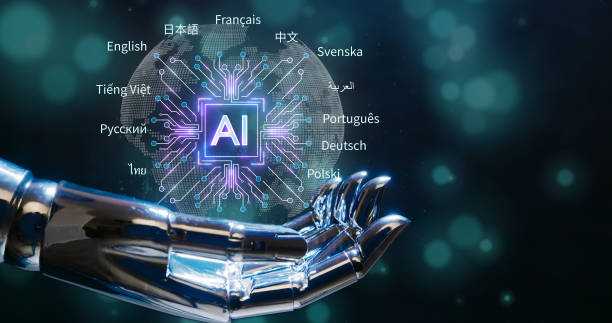
Despite the remarkable advancements in robotics and artificial intelligence, smart robots still face numerous challenges and limitations.
Some of the most important of these challenges include:
High Cost: The development and construction of smart robots require significant investment in research and development, hardware, and software.
This makes AI robots inaccessible to many businesses and individuals.
Complexity: Smart robots are complex systems that require expertise in various fields such as robotics engineering, computer science, and artificial intelligence.
The design, construction, and maintenance of these robots require high levels of knowledge and skill.
Security: Smart robots can be subject to cyberattacks and misuse.
Ensuring the security of these robots and preventing unauthorized access to them is a major challenge.
Ethics: The use of AI robots raises numerous ethical questions.
For example, who is responsible for the actions of robots? Should robots have rights? How can we prevent the misuse of robots?
Technical Limitations: Smart robots are still inferior to humans in many areas.
For example, robots face challenges in understanding natural language, recognizing emotions, and solving complex problems.
To address these challenges and limitations, we need more investment in research and development, the development of security and ethical standards, and the training of skilled personnel.
The Future of Artificial Intelligence Robots
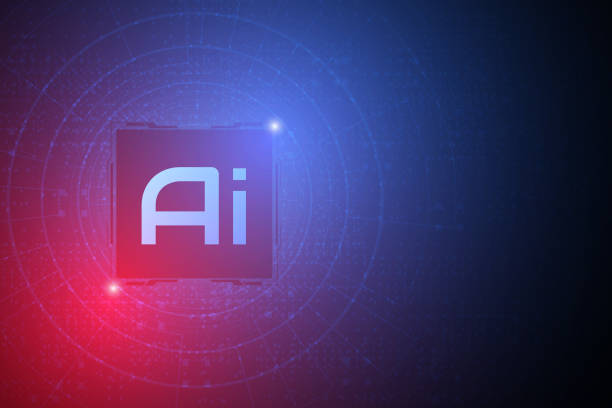
The future of AI robots looks very bright and promising.
With the ever-increasing advancement of technology, smart robots are expected to play a more prominent role in various aspects of our lives.
Automation: Smart robots can automatically perform many repetitive and tedious tasks and help humans focus on more creative and important work.
AI robots can help humans in dangerous, unhealthy, and grueling environments and keep them away from these dangers.
Improved Productivity: Smart robots can help improve productivity in various industries by increasing speed, accuracy, and work quality.
Creating New Job Opportunities: The development and maintenance of smart robots require skilled personnel in various fields such as robotics engineering, computer science, and artificial intelligence.
This can lead to the creation of new job opportunities.
Improving Quality of Life: Smart robots can help improve people’s quality of life.
For example, nursing robots can care for the elderly and disabled, educational robots can help children learn, and home robots can perform daily tasks.
To benefit from the advantages of AI robots, we need careful planning, investment in education, and the development of ethical and security standards.
The Impact of Artificial Intelligence Robots on Various Industries
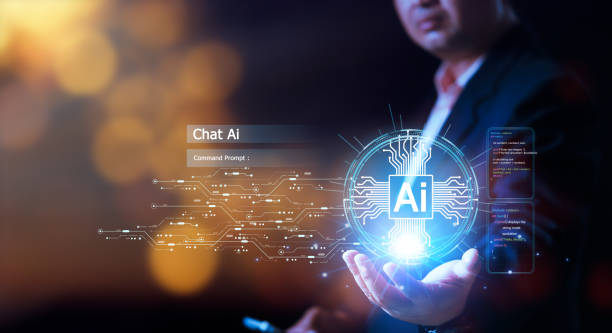
AI robots are rapidly changing various industries.
The effects of this technology vary in each industry, but in general, smart robots help improve productivity, reduce costs, and increase the quality of products and services.
Manufacturing: Smart robots are used in the manufacturing industry to automate production lines, control quality, and perform dangerous or repetitive tasks.
These robots can perform various tasks such as welding, painting, assembly, and packaging with high speed and accuracy.
AI robots significantly increase the quality of products by reducing human error.
Healthcare: Smart robots are used in healthcare for surgery, nursing, and disease diagnosis.
These robots can improve the accuracy and speed of diagnosis and treatment and help reduce medical errors.
Customer Service: Chatbot robots and virtual assistants are used in customer service to answer customer questions, solve their problems, and provide a personalized experience.
These robots can help reduce customer service costs and increase customer satisfaction.
Agriculture: Smart robots are used in the agricultural industry for planting, tending, and harvesting crops.
These robots can help reduce water and fertilizer use, increase crop yields, and reduce production costs.
AI robots in this industry can help produce more and better quality food for the world’s growing population.
Transportation: Smart robots are used in the transportation industry for self-driving, delivery, and traffic management.
These robots can help reduce traffic accidents, reduce air pollution, and increase efficiency in cargo transportation.
However, the security and legal issues related to self-driving vehicles still need to be resolved.
Artificial Intelligence Robots and the Future of Work
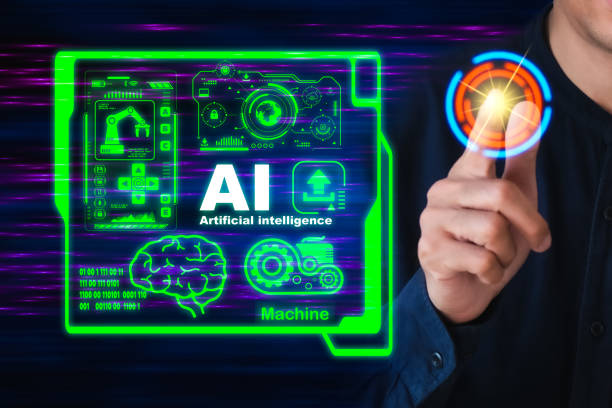
The entry of AI robots into the labor market has raised concerns about job losses.
While some repetitive and routine jobs may be completely automated by robots, AI robots will also create new job opportunities.
Jobs at Risk: Jobs involving repetitive, routine, and physical tasks are more at risk of automation.
These jobs include production line workers, drivers, cashiers, and office workers.
Jobs in Demand: Jobs that require creativity, critical thinking, problem-solving, and human interaction are less at risk of automation.
These jobs include robotics engineers, artificial intelligence specialists, software developers, managers, and marketing specialists.
| Skill | Importance | Why is it important? |
|---|---|---|
| Creativity | High | For solving new problems and innovation |
| Critical Thinking | High | For evaluating information and making logical decisions |
| Problem Solving | High | For finding solutions to complex problems |
| Human Interaction | Medium | For collaborating with others and building effective relationships |
| Technical Skills | Medium | For working with robots and intelligent systems |
Changes in Skills: With the entry of AI robots into the labor market, the need for new skills will also increase.
Employees need to upgrade their skills in areas such as computer science, artificial intelligence, and robotics engineering.
Continuous training and learning is essential for adapting to changes in the labor market.
AI robots will create new skill requirements by changing the nature of work.
To succeed in the future of work, people must upgrade their skills, receive the necessary training, and be prepared to embrace change.
AI robots can act as a powerful partner in the workplace, provided that humans can interact effectively with them.
Are you tired of losing business opportunities due to not having a professional company website? Don’t worry anymore! With Rasaweb’s company website design services:
✅ Your brand’s credibility and professionalism will increase.
✅ You will attract more customers and sales leads.
⚡ Get a free consultation now to get started!
Important Tips for Choosing an Artificial Intelligence Robot
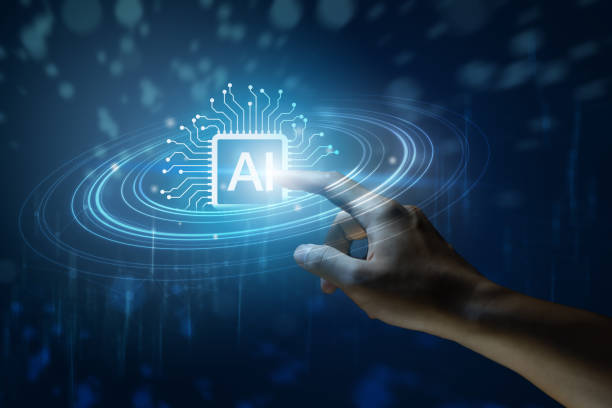
Choosing the right AI robot for a business or organization requires careful consideration of needs and goals.
Here are some important tips for choosing the right AI robot:
Determine Needs: First of all, you need to accurately determine your needs and goals.
What tasks do you want to assign to the AI robot? What results do you expect from using the robot? To what extent should the AI robot have learning and adaptability capabilities?
Research and Review: After determining your needs, you should research and review the different types of AI robots available on the market.
Compare different features, capabilities, and prices.
Read reviews from previous users and customers.
You can use Google to do this and read different reviews.
Check Capabilities: The AI robot should have the necessary capabilities to perform your desired tasks.
For example, if you want to use the robot for customer service, it should have the ability to understand natural language, answer questions, and solve problems.
AI robots should be continuously updated to adapt to environmental changes.
Check Costs: The cost of an AI robot includes the purchase price, maintenance costs, and training costs.
You should make sure that the cost of the robot is compatible with your budget.
Check if the AI robot requires periodic repair and maintenance.
Test: If possible, test the AI robot before buying it.
Ask the seller to demonstrate the robot in your real work environment.
By testing the robot, you can make sure that the robot is well suited to your needs.
If you can, get help from a specialist to help you conduct these tests.
Artificial Intelligence Robots in Iran: Prospects and Challenges
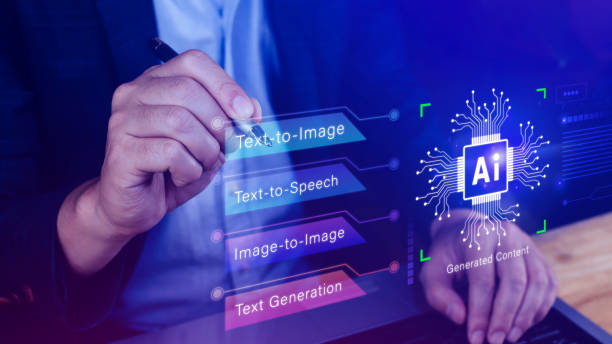
The development of AI robots in Iran faces unique challenges and opportunities.
Given the high potential of skilled and young manpower in the country, Iran can become one of the leading countries in the field of robotics and artificial intelligence.
Prospects: Iran has a skilled and young workforce in the fields of engineering, computer science, and mathematics.
This force can contribute to the development and innovation in the field of robotics and artificial intelligence.
Also, the increasing need for automation in various industries has created many opportunities for the development of AI robots in Iran.
The government can also help the growth of this industry by supporting knowledge-based companies and investing in research and development.
Challenges: The lack of investment in research and development is one of the biggest challenges to the development of AI robots in Iran.
Also, lack of access to advanced technologies and necessary equipment can hinder the progress of this industry.
The absence of national and international standards can also slow down the development of AI robots in Iran.
Legal and ethical issues related to the use of robots should also be seriously considered. AI robots in Iran face great challenges.
Solutions: To overcome the challenges and seize the opportunities, the government should increase investment in research and development, facilitate access to advanced technologies, and develop national and international standards.
Also, the private sector should cooperate with universities and research centers to develop and commercialize AI robots.
Promoting a culture of innovation and entrepreneurship can also help the growth of this industry.
With careful planning and cooperation between different sectors, Iran can become one of the leading countries in the field of AI robots in the near future.
AI robots in Iran need all-round support.
FAQ
| Question | Answer |
|---|---|
| What is an artificial intelligence robot? | It is a robot that uses the capabilities of artificial intelligence to understand the environment, reason, learn, and make decisions to perform complex tasks independently. |
| What is the main difference between a regular robot and an artificial intelligence robot? | Artificial intelligence robots can learn and adapt to their environment, while regular robots usually operate based on fixed and pre-programmed plans. |
| In what areas are artificial intelligence robots used? | In areas such as industry (production lines), medicine (robotic surgery), services (customer support, smart vacuum cleaners), exploration (space and underwater), and entertainment. |
| How do artificial intelligence robots learn? | They acquire new skills through machine learning and deep learning algorithms, by analyzing big data and identifying patterns. |
| Can artificial intelligence robots have feelings? | Currently, no. They can recognize or simulate emotions, but they do not have a real experience of emotions like humans. |
| What are the most important advantages of using artificial intelligence robots? | Increasing productivity, reducing human error, performing dangerous or repetitive tasks, and providing innovative and efficient services. |
| What are the challenges in developing artificial intelligence robots? | The need for a lot of high-quality data, the complexity of algorithms, ethical issues, cyber security, and the high cost of research and development. |
| Are artificial intelligence robots dangerous to humans? | By following safe design principles and ethical regulations, no. Concerns are more related to social and economic impacts such as changes in the labor market. |
| What is an example of an artificial intelligence robot in daily life? | Smart vacuum cleaners (such as Roomba) that automatically map and clean the house, or smart voice assistants (such as Siri and Alexa). |
| How is the future of artificial intelligence robots predicted? | They are expected to become smarter, more autonomous, and capable of more complex interactions with humans, and play a more prominent role in industry, medicine, transportation, and daily life. |
And other services of Rasa Web advertising agency in the field of advertising
Intelligent sales automation: A combination of creativity and technology to improve SEO ranking through SEO-focused content strategy.
Intelligent UI/UX: A fast and efficient solution to improve SEO ranking with a focus on marketing automation.
Intelligent content strategy: Designed for businesses looking to manage campaigns through attractive user interface design.
Intelligent digital advertising: A new service to increase website visits through SEO-focused content strategy.
Intelligent marketing automation: A fast and efficient solution to improve SEO ranking with a focus on SEO-focused content strategy.
And over hundreds of other services in the field of internet advertising, advertising consulting and organizational solutions
Internet Advertising | Advertising Strategy | Reportage Advertising
Resources
ChatGPT; Applied Epistemological Development
,Using Artificial Intelligence in Marketing Psychology
,What is Artificial Intelligence? Types, Levels and Applications
,Applications of Artificial Intelligence in Everyday Life
? To be seen and grow your business in the digital world, Rasaweb Digital Marketing Agency is with you. From custom website design to SEO optimization and advertising campaign management, we pave your way to success.
📍 Tehran, Mirdamad Street, next to the Central Bank, Southern Kazerun Alley, Ramin Alley No. 6

